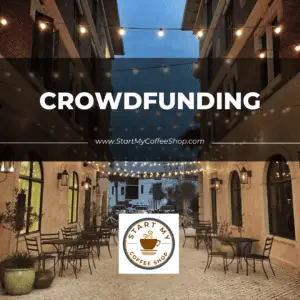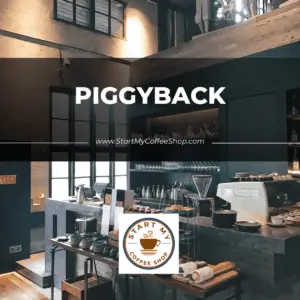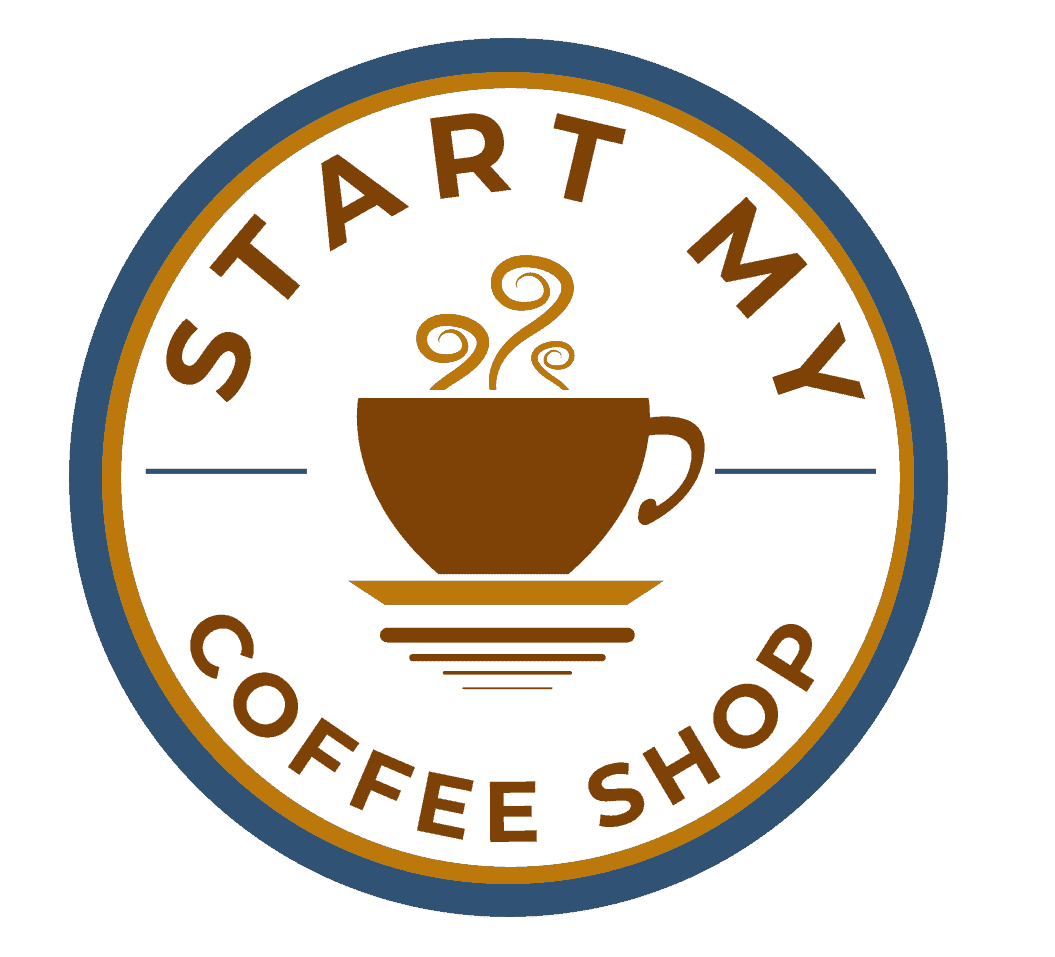When you’re passionate about opening the ultimate coffee shop, there’s practically nothing that can stand in your way. Well, except, of course, money. Unless you’re one of the fortunate who comes from a great fortune, money can be the greatest downfall to building your coffee dream.
After all, opening a coffee shop can cost anywhere from $80,000 to $250,000, depending on the size, services, and equipment. Since most people don’t have that kind of money lying around, they think the next best option would be to head to the bank and take out a loan.
Unfortunately, since startups don’t typically have a reliable credit history to fall back on, conventional lenders often deny traditional loans. Despite this, there are still options to open a coffee shop without taking out a loan, which this article will address.
The following are five ways to open a coffee shop without taking out a loan, which simply requires a bit of time, research, planning, and preparation. The key to making this work successful is to think outside the box and keep an open mind.
1. Angel Investors
An affluent friend, family member, or individual looking to invest capital for a coffee shop startup can be your angel investor. Rather than paying back principal plus interest, this may be in exchange for ownership equity or convertible debt.
What you need to know about Angel Investors
Angel Investors are becoming more popular as a source of funding for startups. The primary advantage of an Angel Investor is financing your coffee shop without the risks of starting out your business in debt, as you would with a traditional loan.
The downside of Angel Investors is that you may be giving up total control over your business. Choosing the right person to be your Angel Investor is extremely important. It’s not just about getting the money; it’s about forging a strong relationship with a business partner.
Keep in mind:
- Angel Investing is very risky – On the off chance your coffee shop completely tanks, it’s your Angel who is out the money that’s been invested. It’s your job to provide solid information to ease the worry of a person who takes an interest in investing in your coffee concept. They’re taking a huge risk of potentially losing all the money they choose to invest.
- Angel Investors want details – Because of the risk they’re taking, Angel Investors are going to want to see a thorough business plan. They want to see you’re passionate about building a coffee brand, you’re committed to the process, and that you’ll operate with integrity. Angel’s are typically entrepreneurs themselves and know what it takes to succeed.
- Angel Investing is time-consuming – If you think you can simply present your polished business plan to an Angel Investor to have them turn around and hand you a check, get ready to be disappointed. Not only does it take time to find the right person interested in investing in your coffee shop, it also takes time to negotiate the terms and conditions.
Angel Investors can bring a huge sigh of relief when determining how to open your coffee shop without taking out a loan. If you should decide this is the best option for you, remember to be patient, take your time, and do your research.
Just because you find a person interested in funding your coffee shop, doesn’t mean their terms are in your best interest. Keep the lines of communication open and be honest about your final expectations.
2. Crowdfunding

Generating startup costs from a large group of people who make donations in small increments is another great resource for funding. Offer an incentive, as a way to entice people to donate, making sure your offer is realistic and you follow through.
Crowdfunding is a powerful way to raise capital
One of the greatest advantages of social media is the ability to reach a wide range of people. This can especially work in your favor if you choose to finance your coffee shop by crowdfunding. Crowdfunding is revolutionizing the way small businesses raise the money needed to start their business.
There are multiple resources online to create your campaign for crowdfunding such as Kickstarter, GoFundMe, and Indiegogo.
Some advantages are:
- Instant marketing – Creating a crowdfunding campaign is an excellent way to start marketing your coffee brand before you’ve raised any money. By sharing the story behind your coffee concept, you’re creating awareness of the brand you’re building, capturing the attention of people and investors who may take interest and decide to help with your cause.
- Customer loyalty – People like to be involved in the process of creating something big. Your crowdfunding campaign is a way to let the public in on your dream, and to also have a piece of it. The people willing to back your idea by donating money towards your startup are highly likely to become advocates and loyal customers, promoting your shop to their friends.
- Build traction – Getting people involved in the early stages of opening your coffee shop is a great way to build traction. Once others see that people are willing to get behind your coffee concept, it encourages them to get involved too. With the right platform, you can provide validation for your brand as social proof to gain the traction needed to raise capital.
Financing your coffee shop doesn’t have to come from one wealthy investor; it can come from a large group of people willing to donate small sums of money. Crowdfunding has helped more than a million small businesses raise a few billion dollars in startup costs.
Leverage your community and relationships by creating a crowdfunding campaign that effectively communicates your mission, goals, and the benefits of backing your idea.
3. Small Scale
Creating a coffee brand doesn’t have to start with a full-fledged coffee shop. Consider creating your coffee brand on a smaller scale with a mobile kiosk or coffee cart, which is far less expensive than opening an actual coffee shop and still just as worthy.
Get big results by starting your coffee shop on a smaller scale
Building a successful coffee brand doesn’t have to start in an actual coffee shop. Many advantages can arise from starting a coffee brand on a smaller scale. Not only is a coffee cart or kiosk far less expensive than opening a shop, but it can also be a lot easier when facing the inevitable trials and errors that come from starting any business until you get your system down just right.
The following are tips for success in starting a coffee cart or kiosk:
- Location – Where you choose to set your coffee cart is going to be pertinent to your success. Not only do you want to be sure you’re in a highly-populated setting, but you also need to be sure you’ll have access to water and electricity. While it’s in your favor to be mobile, you also want to be in a consistent place so your loyal customers know where to find you.
- Consistency – The biggest aspect of owning a coffee business is consistency. People want to know the taste they can depend on when they come to you for coffee. Keep in mind you’re not just serving coffee; you’re building a brand. It may be on a smaller scale, but brewing a consistent cup of coffee is key to taking your cart all the way to the big leagues.
- Time – One thing to keep in mind, as the owner of a coffee cart or kiosk, is that you’re serving people on who are on the go. Time is money for you and your customer so it’s in your best interest to come up with an efficient system that cuts down on wasted time. Not only will these satisfy your customers in a hurry, but it will also satisfy your bank account.
A coffee cart or kiosk is a wonderful way to begin your coffee brand. It allows you to fine-tune your craft on a smaller scale, so when you decide to open your shop, you’ll be ready to go. The best part of starting small is the startup cost of a coffee cart or kiosk is nearly a tenth that of a standard shop. This can make financing your coffee brand without a loan more feasible.
4. Online business
Consider starting your coffee brand online. By partnering up with a local roaster and creating a strong online presence, you can start generating income while you build your coffee brand, which can eventually lead you to open up your own shop.
Now that you have your business plan in place, it’s time to raise some money!
A wonderful way to build your coffee brand is on the World Wide Web
Opening a coffee shop may be the final destination, but there’s an abundance of stepping-stones that still involve coffee and support the building of your brand. Selling coffee online is a remarkable way that will not only get your foot into the coffee industry but allow you to create a strong online presence, tapping into a large market, at a fraction of the startup cost.
- Partner up with a local roaster – By partnering up with a local roaster you can sell bundles of coffee online with an original taste. Better yet, learn to roast some coffee beans yourself! This will allow you to learn the science behind coffee and enhance your business.
- Determine your product – By selling coffee products online you have a choice between cups, pods, or blends. Decide which product is best for your coffee concept, and then research the best supplier. A good place to start is by knowing who is your target market.
- Offer a subscription – One thing is for sure, if people like the coffee you sell, they’re going to come back for more. Leverage this opportunity by creating a weekly or monthly subscription-based plan, delivering varieties of blends straight to your customer’s door.
While you may not have envisioned opening a coffee shop from the luxury of your own home, or better yet, another coffee shop, starting your coffee brand online is an incredible way to get your feet off the ground.
The initial cost of starting up is nowhere near what the cost would be to open up a standard shop, and yet, your reach is far greater online than a shop within your community. It may only be a stepping stone, but a mighty stone indeed.
5. Piggyback

Join teams with a company that is already established. There are several types of companies, such as bookstores, schools, and art galleries that would love the addition of your coffee and don’t require the extra cost of a standard coffee shop.
Types of businesses that would love to host your coffee brand
Partnering up with a business that has already been established is a great way to cut down on your startup cost. Several types of businesses would love to host your coffee brand.
The following list of businesses for you to consider would be a great fit with coffee:
- Art galleries
- Colleges and Universities
- Bookstores
- Libraries
- Grocery Stores
- Bakeries
- Boutiques
- Museums
- Transit Stations
- Community Centers
The possibilities for generating money to start a coffee shop, without taking out a loan, are endless, as long as you have passion and perseverance (and a strong cup of coffee). Coffee lovers are saturated all over the world; simply find your place and let the brewing begin!
Where there’s a will, there’s a way, and if it comes with coffee, it’s even better! If you don’t have the funds to open your own coffee shop, consider one of these five options as a solution to raising money. There are plenty of successful coffee shops that have opened without having to take out a loan. It starts with deciding the best option for you.
The best way to determine which of these five options for raising money to fund your startup is most beneficial for your coffee concept is by writing your business plan.
A business plan is a crucial element that can determine the overall success of your coffee shop.
Your business plan will not only give you some insight into the estimated total startup cost (as well as fixed and variable operational costs), but will also provide your potential investors with a realistic presentation of what you plan to do once the funds have been raised. Any investor knows that a business without a plan is doomed for failure.
Some key items to remember:
- Determine your break-even point – Calculating your break-even point is important because it lets you and your investors know how many cups of coffee need to be sold before you can start to generate a profit. This allows you to put that goal into a potential timeframe.
- Funding investors with equity – If you decide to pay back your investors in equity, you need to know the potential value of your company before you can sell them on the idea. A business plan will help determine the value of your coffee shop once it’s been established.
- Budget for unanticipated costs – Far too often new entrepreneurs underestimate the total startup cost when opening their first business. When calculating your totals, be sure to reserve extra funding for any unanticipated costs, in addition to personal living expenses.
Do your due diligence when writing your business plan to make sure you’ve accounted for every detail. Keep in mind when you’re just starting out, your business is an untested entity with no assets, revenue, or customers.
By writing a thorough business plan, you’re letting your potential investors know that you’ve researched every aspect of the industry, you’ve acknowledged your strengths and weaknesses and can give a realistic idea of the value you plan to build along with your coffee brand concept, to gain assets, revenue, and customers.
Frequently Asked Questions
How much does it cost to open a coffee cart?
While the average cart costs around $20,000, a very plain and ordinary cart can cost between $5,000 and $12,000. The initial investment of starting a cart is going to be less than a kiosk and about a tenth of a standard shop.
Find out more about how much it costs to start your own business here.
What’s the difference between a coffee cart and a kiosk?
A coffee cart is going to be more of a mobile concept, which is great for parking at special events, fairs, and festivals. A kiosk is more of a permanent setup on a miniature scale with actual plumbing hooked up.
To learn more on how to start your own coffee shop check my startup documents here
Please note: This blog post is for educational purposes only and does not constitute legal advice. Please consult a legal expert to address your specific needs.

Hi! I’m Shawn Chun
My adventure in coffee began when I first launched my first coffee shop back in the early 2000s. I had to figure out so many things on my own and to make it worse within 2 years of opening two large corporate coffee chains moved in just blocks away from me!
As I saw smaller and even some larger coffee shops in the neighborhood slowly lose customers to these giant coffee chains and slowly close up shop, I knew that I had to start getting creative…or go out of business.
I (like you may be) knew the coffee industry well. I could make the best latte art around and the foam on my caps was the fluffiest you have ever seen. I even had the best state-of-the-art 2 group digital Nuova Simonelli machine money could buy. But I knew that these things alone would not be enough to lure customers away from the name brand established coffee shops.
Eventually, through lots of trial and error as well as perseverance and creativity I did find a way to not only survive but also thrive in the coffee/espresso industry even while those corporate coffee chains stayed put. During those years I learned to adapt and always faced new challenges. It was not always easy, however, in the end, I was the sole survivor independent coffee shop within a 10-mile radius of my location. Just two corporate coffee chains and I were left after that year. All told the corporate coffee chains took down over 15 small independent coffee shops and kiosks and I was the last one standing and thriving.
Along the years I meet others with the same passion for coffee and I quickly learned that it is not only “how good a barista is” that makes a coffee shop successful, but the business side of coffee as well.
Hence why I started this website you are on now. To provide the tools and resources for up and coming coffee shop owners to gain that vital insight and knowledge on how to start a coffee shop successfully.
Stick around, browse through my helpful blog and resources and enjoy your stay! With lots of LATTE LOVE!
Shawn






